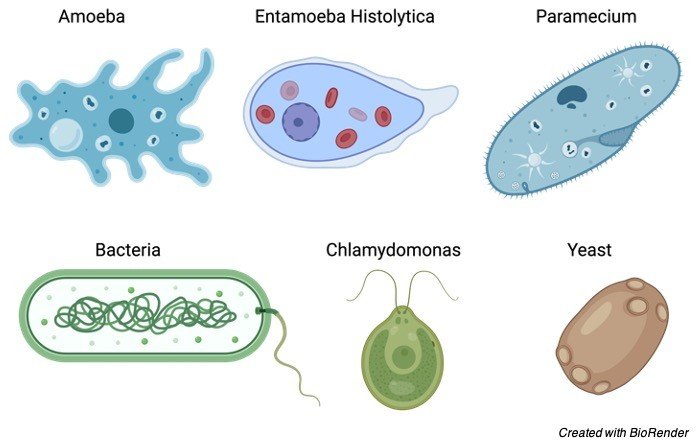Are All Plants Unicellular? Clear Facts You Need to Know

Standing in my backyard one humid July afternoon, I found myself yanking weeds from the garden beds—dandelions, clover, a stubborn little patch of moss growing between bricks. I paused and wondered: could any of these be just a single cell doing all that work? Years ago, before teaching biology to high schoolers (and fielding every wild question imaginable), I would have lumped anything green into “plant = simple.” Reality is so much richer—and more surprising.

Let’s get hands-on and bust the myth: Are all plants unicellular? Absolutely not—and seeing the difference for yourself will drive that lesson home forever. Here’s how I teach it, beyond the textbook.
Tested Strategies for Understanding Plant Complexity
1. Go Beyond the Textbook—Microscope in Hand
Every fall, my classroom turns into a mini-lab. Instead of reciting definitions about “multicellular” versus “unicellular,” students collect their own pond water samples. We use basic $40 pocket microscopes or even clip-on smartphone lenses (like the Carson MicroFlip). Within minutes, someone shouts: “Something’s MOVING!” That’s usually Chlamydomonas—a unicellular algae—zipping around solo.
Then we prepare a sliver of spinach leaf on another slide. The difference hits immediately:
- Algae: Single cells swimming freely, no teamwork.
- Leaf: Rows upon rows of tightly packed cells forming veins and skin—a living community.
Pro tip: If you ever get your hands on some duckweed (Lemna), float it in water and check both above and below with a lens. You’ll see rootlets with defined cellular patterns—a far cry from any single-celled organism.
2. Fail First: Assumptions vs Reality
Back when I started teaching, I’d give kids photos of green blobs under microscopes and ask them to sort unicellular vs multicellular without training. Nine out of ten got it wrong—assuming smaller always means simpler. It was only after they saw Volvox colonies (hundreds of cells forming one sphere) that they started questioning their assumptions.

This "failure-first" approach works wonders outside classrooms too. Next time you’re at a botanical garden or farmer’s market, take two minutes to look closely at a blade of grass versus pond scum on a birdbath edge:
- Grass? Those stripes and fibers = multicells in action.
- Pond scum? Scoop up some goo; odds are you’ll find mostly unicells (unless you spot filamentous algae).
3. Use Numbers to Anchor Your Understanding
Here’s what actually stuck with me over the years—not definitions but scale:
- A mature oak tree contains approximately 10^12 (that’s a trillion!) cells.
- The largest single-celled algae (Acetabularia) can still fit comfortably on your pinky nail.
Whenever biology gets abstract, pin it down with real numbers—it suddenly feels less like magic and more like engineering.
4. Context Matters: The Exceptions Are Where You Learn Most
One year we sampled blue-green “algae” from an old tire filled with rainwater—only later did we confirm under higher magnification that these were cyanobacteria: not plants at all! That mix-up became a class joke (“Don’t judge an algae by its color!”). Whenever classification feels slippery, remember most confusion comes from these gray areas.
5. If You Want True Clarity…Compare Everyday Examples Side by Side
- Multicellular: Tomato plant roots (dig one up—you’ll see hundreds of tiny hairs) or any flower bouquet.
- Unicellular: Look for Chlorella powder at health stores; those microscopic green spheres are each a single cell.
- Colonial: Volvox or Spirogyra filaments if you access pond water samples; seen as moving green threads under magnification.
Take photos or draw what you see—the sensory detail cements knowledge deeper than reading ever will.
Unexpected Insight: Why This Even Matters
During my first years as assistant curator at our science museum, visitors constantly asked if seaweeds were plants (“They look like giant leaves—shouldn’t they be?”). Explaining kelp forests as multi-million-celled ecosystems made jaws drop every time—not because people don’t care about taxonomy, but because understanding complexity changes how we value living things. It makes us look closer and ask better questions next time.

Practical Takeaways Anyone Can Try
- Challenge yourself to spot plant structures everywhere:
- Next walk outside? Count visible plant parts that can only exist thanks to many cells working together—a rose petal vein or maple leaf pore.
- Try this kitchen experiment:
- Take spinach leaves; tear one gently against sunlight. See those branching lines? Each is thousands of elongate cells stacked end-to-end.
- Community learning hack:
- Quiz friends/family using food from your fridge: “Is this apple slice made of one cell or billions?” Laughter is guaranteed—the answer is always billions!
- Keep asking why:
- When encountering something new (slime in an aquarium filter? A weird green crust on stones?), pause before googling—is this going solo as a single cell...or part of something bigger?
If anyone tells you “all plants are unicellular,” smile knowingly—you’ve seen proof otherwise with your own eyes (and maybe hands covered in pond muck). Real-world curiosity beats rote facts every time.
So next time you're looking out your window—or up close through a lens—remember: almost every plant you see is an orchestra played by trillions of interconnected players…with just enough quirky soloists lurking in ponds to keep life endlessly fascinating.
And if that makes you want to dig deeper into biology's exceptions and edge cases? Welcome to the club! That itch for nuance is where real discovery happens—which beats memorizing labels any day.



